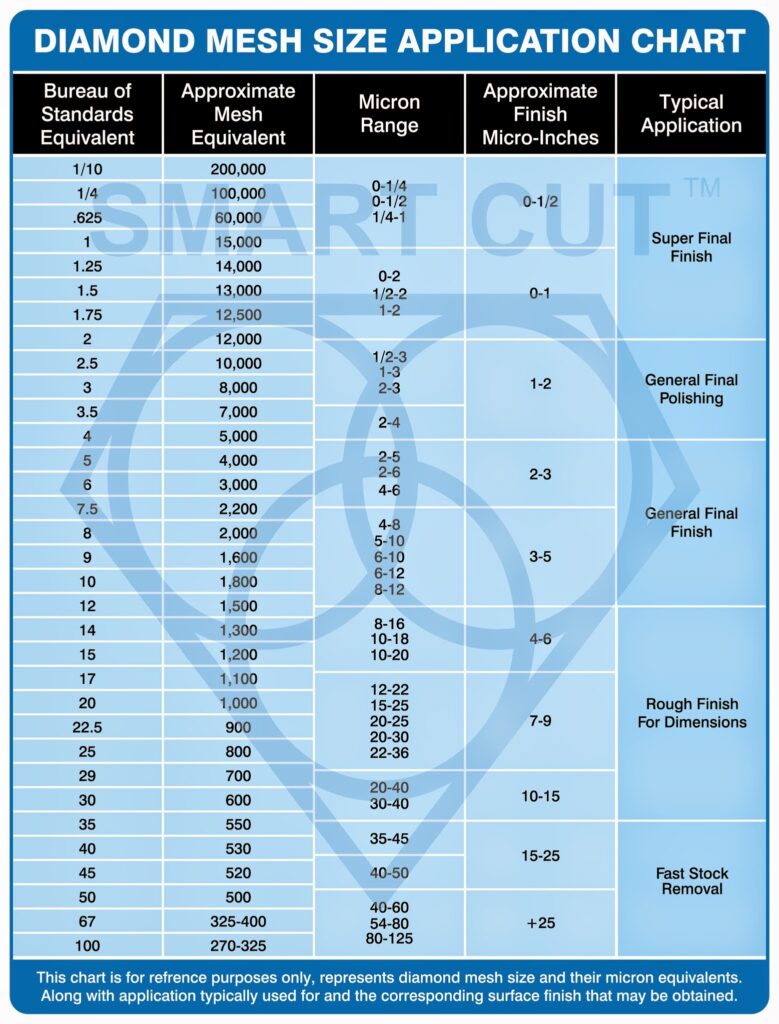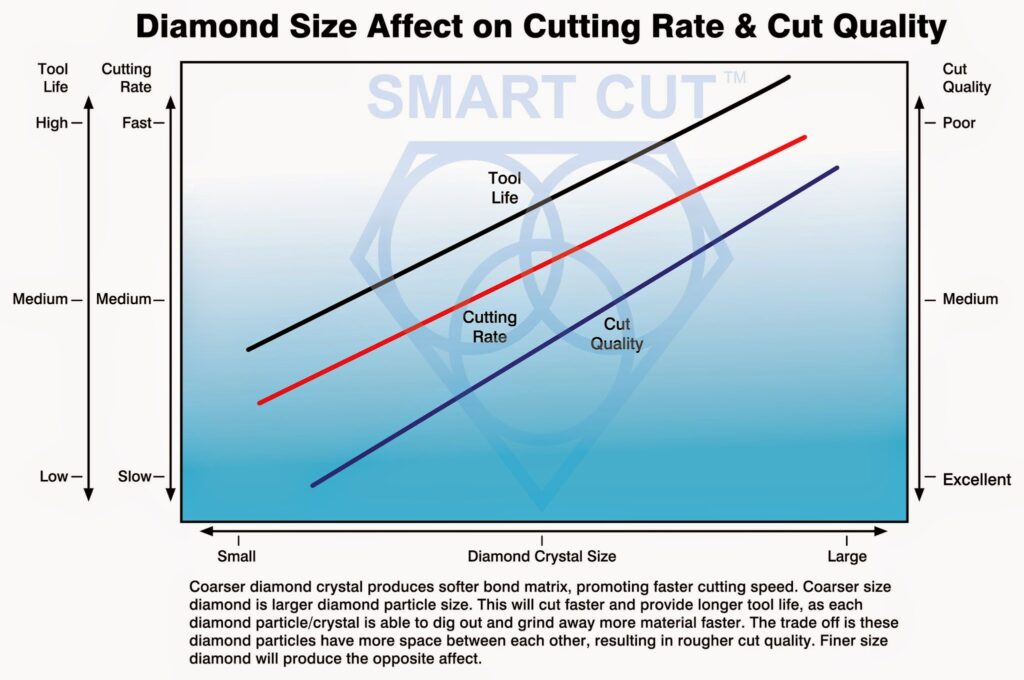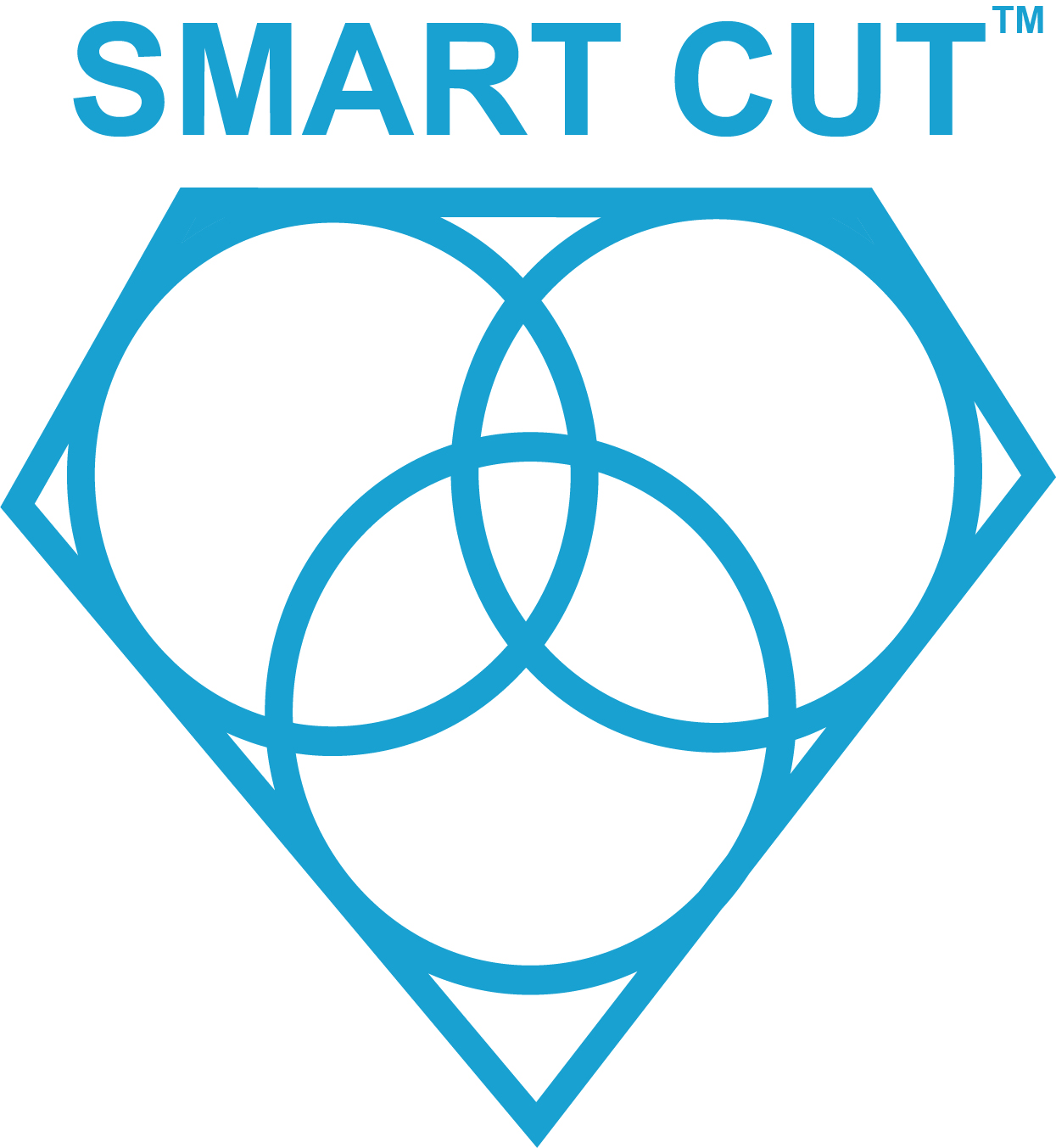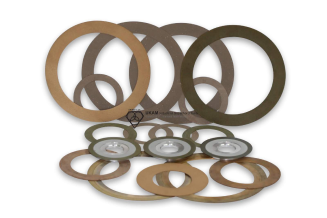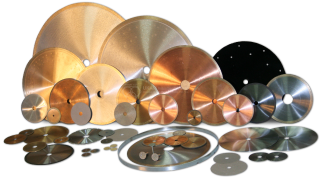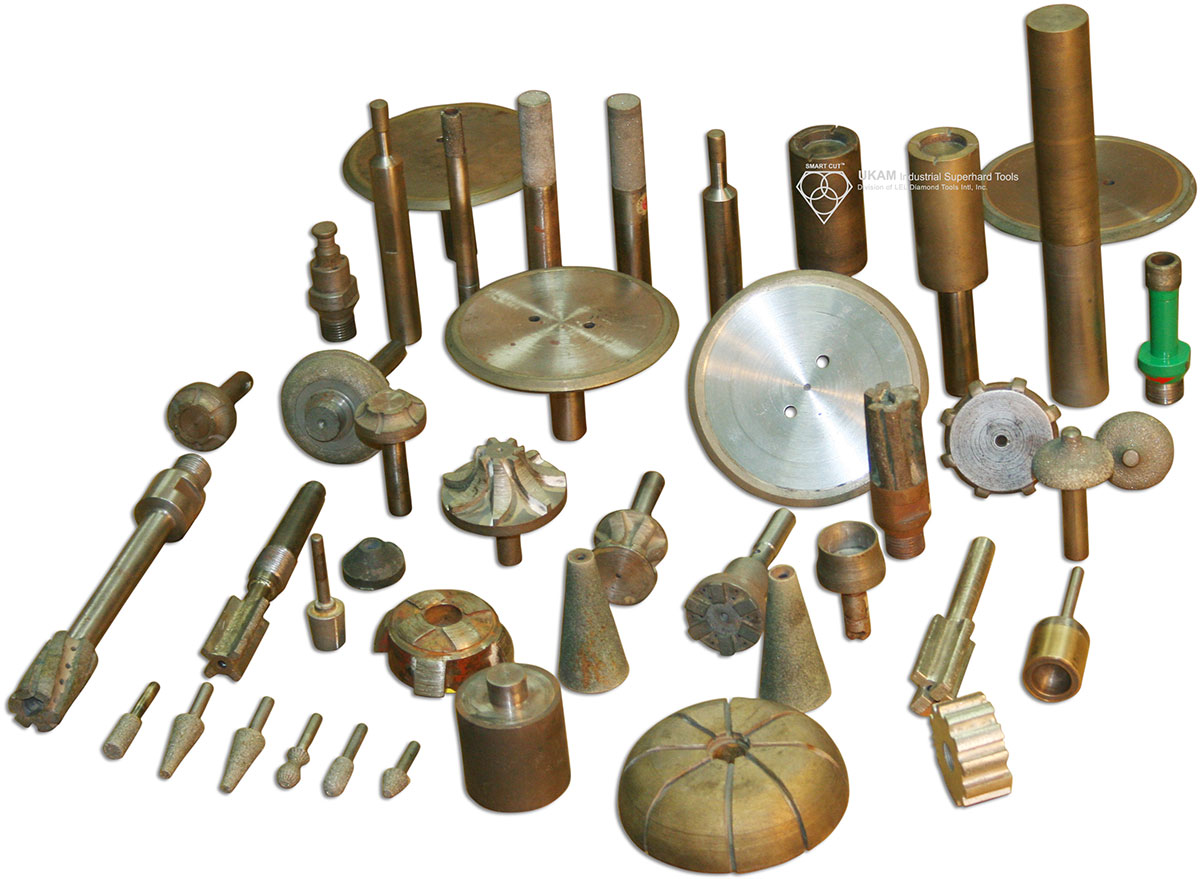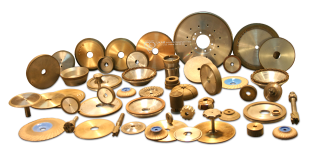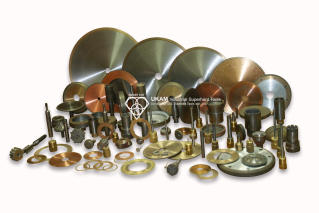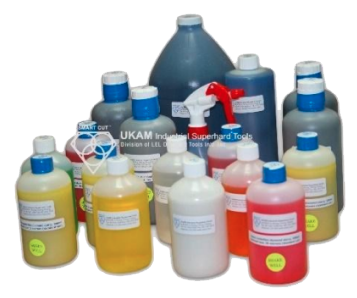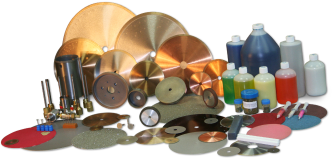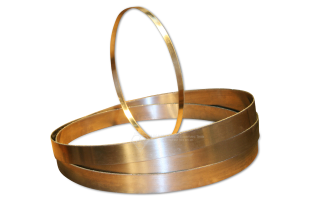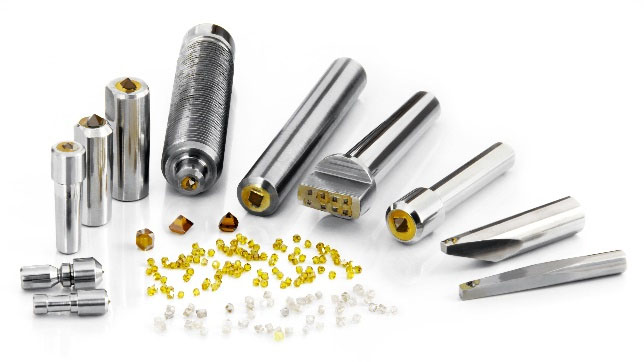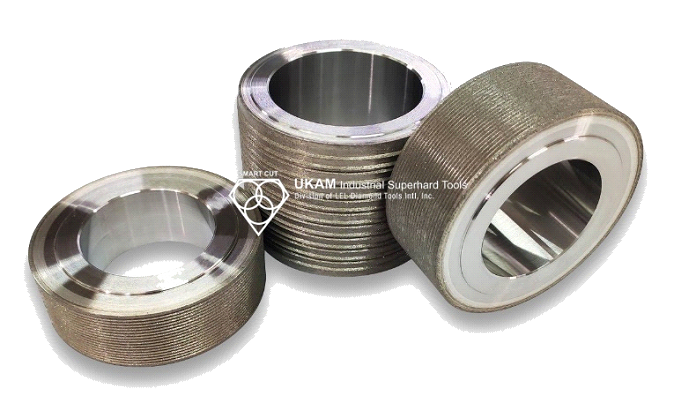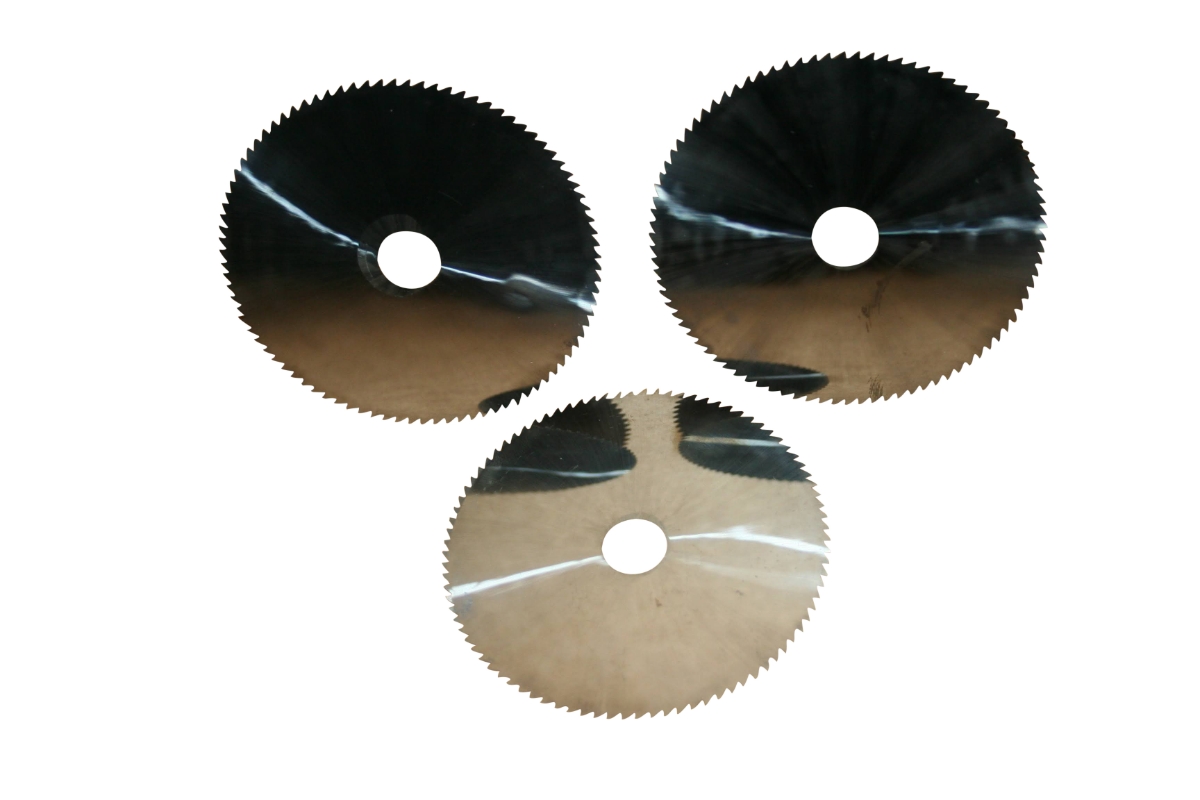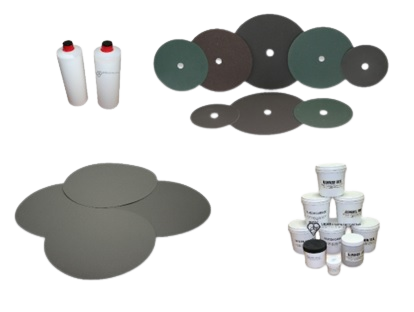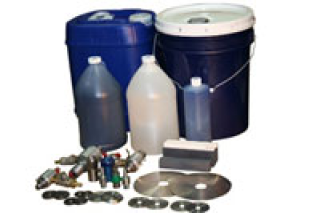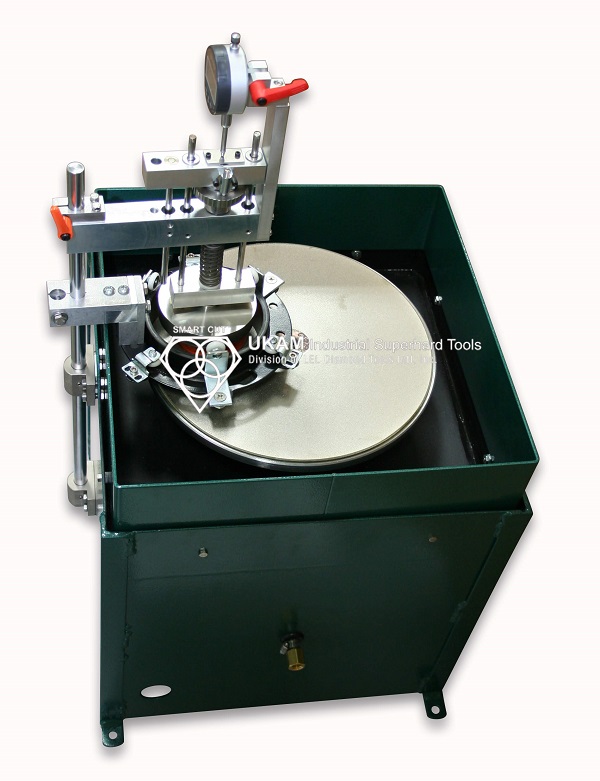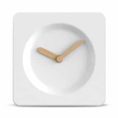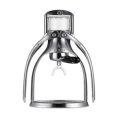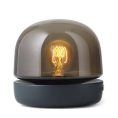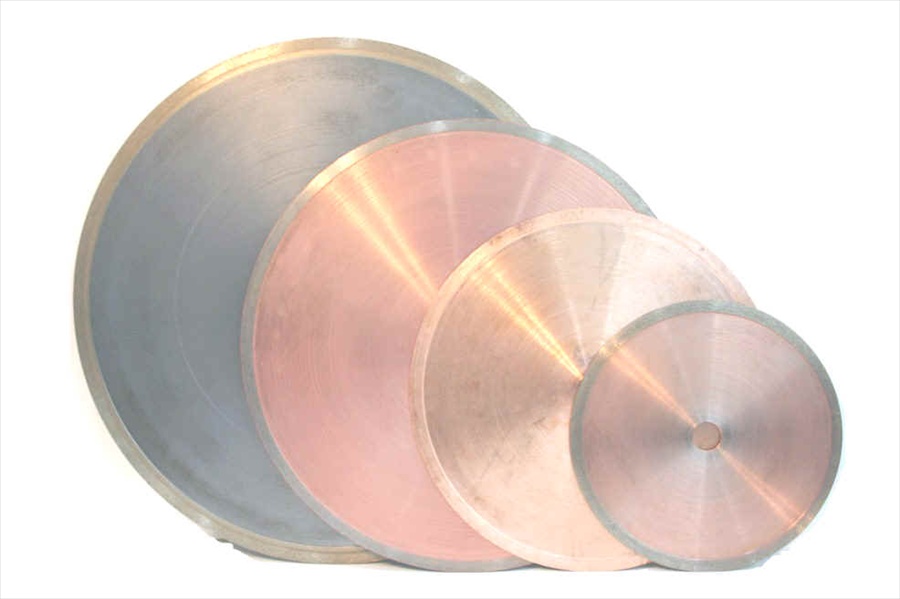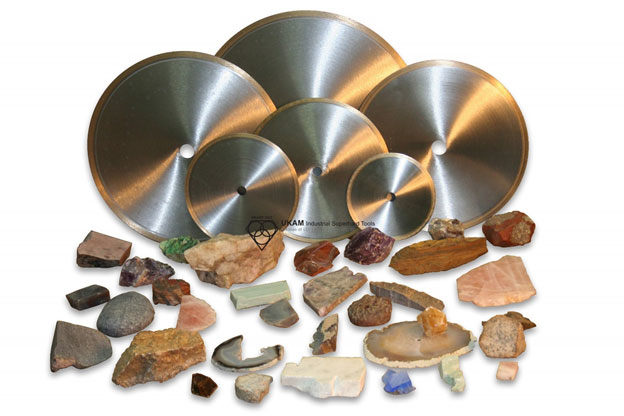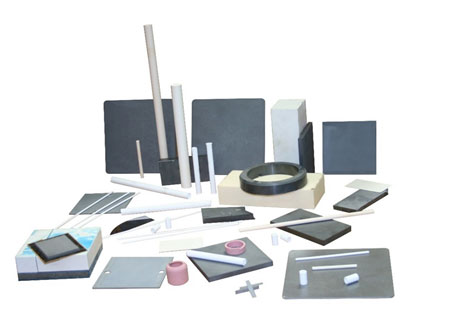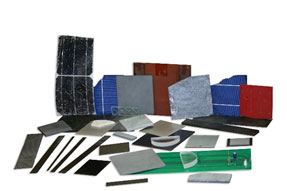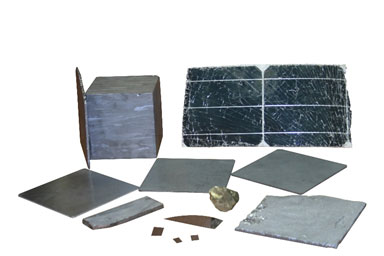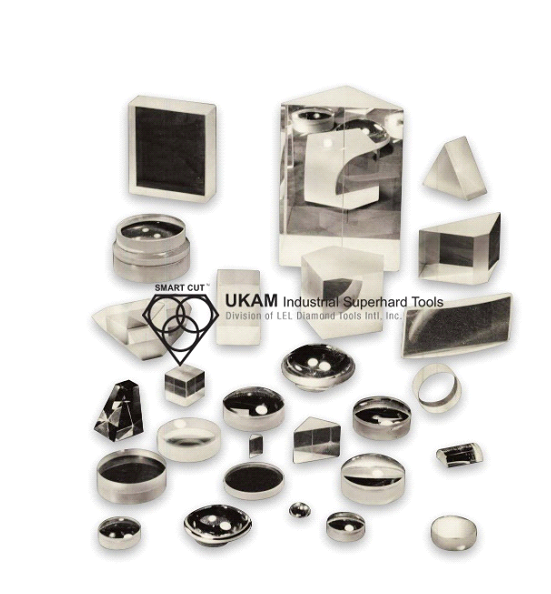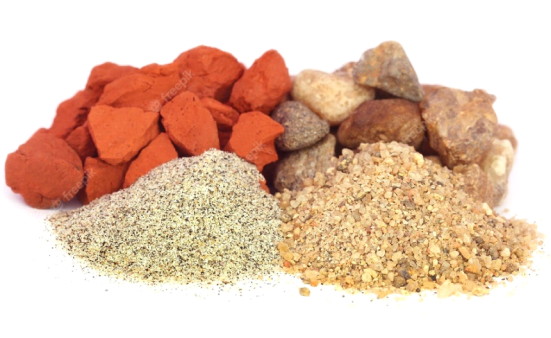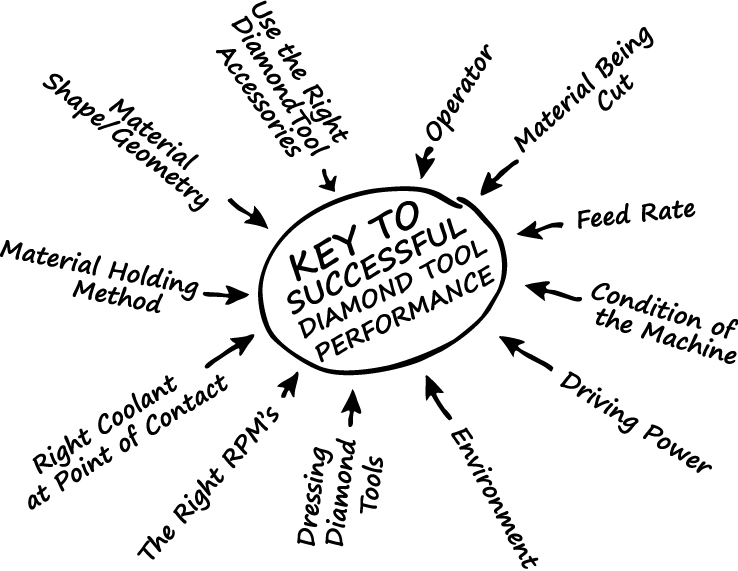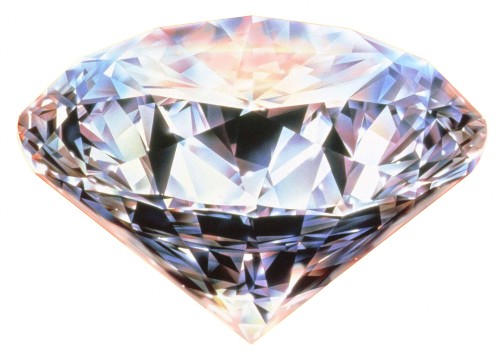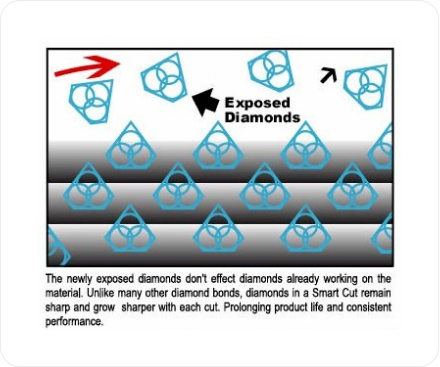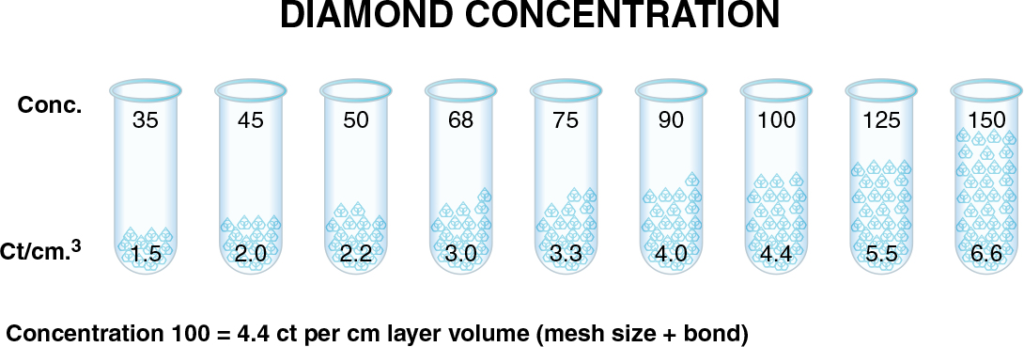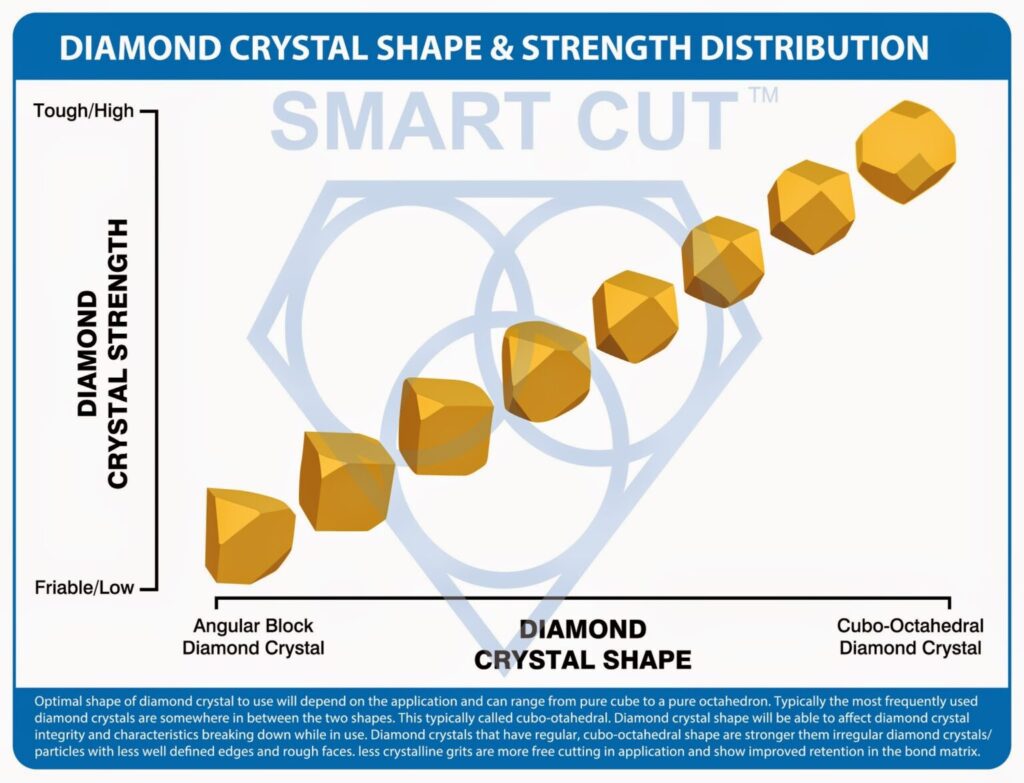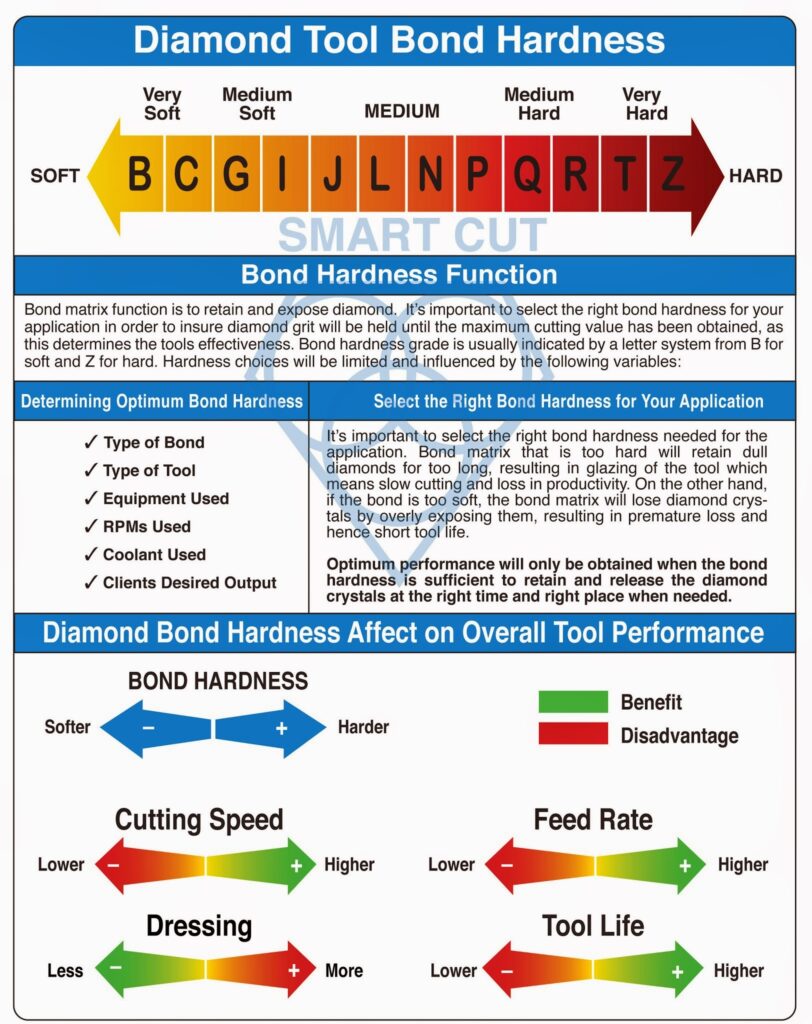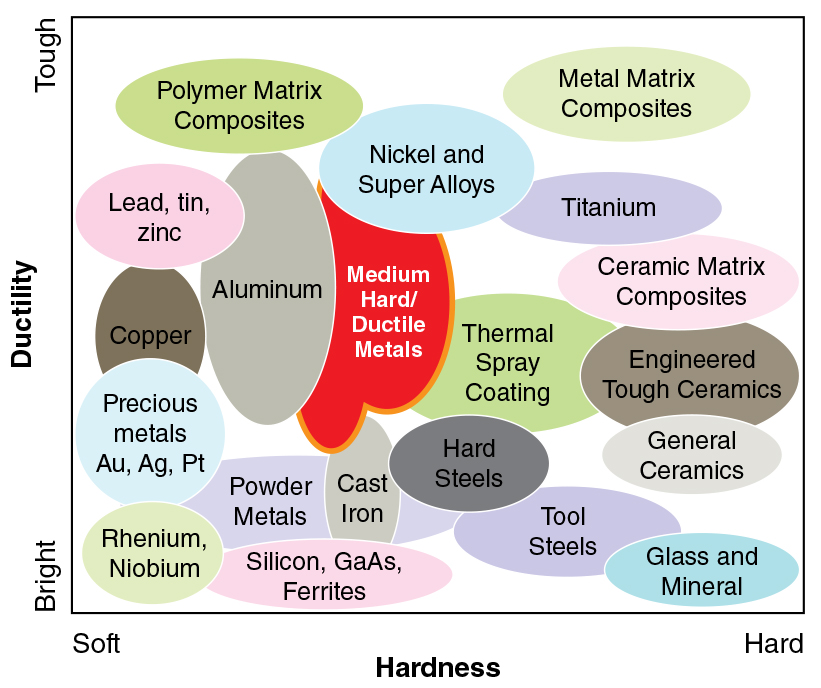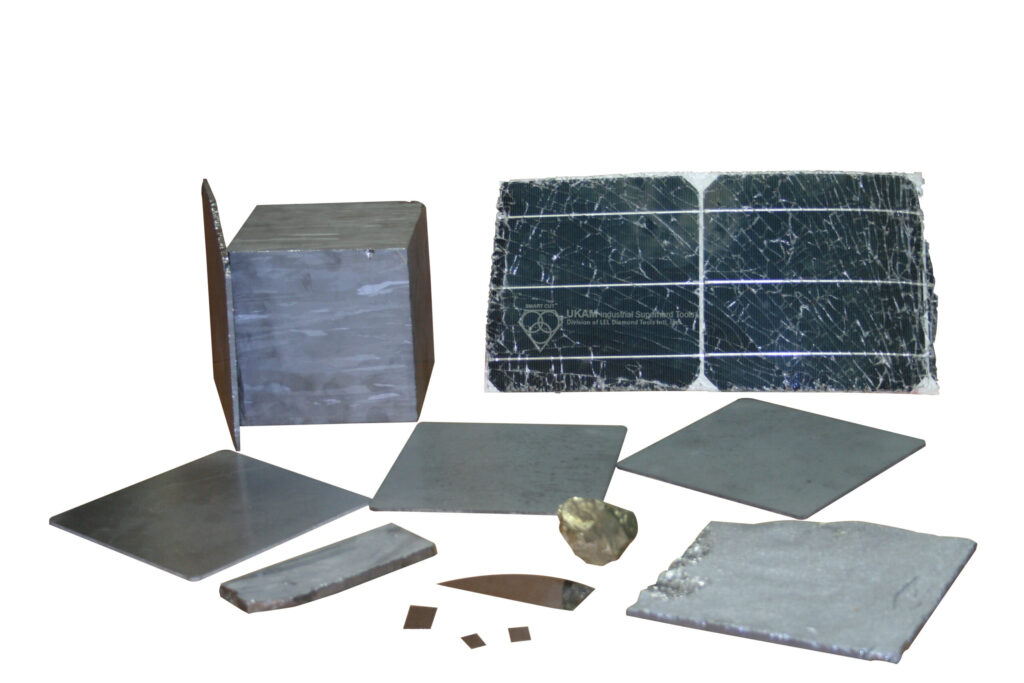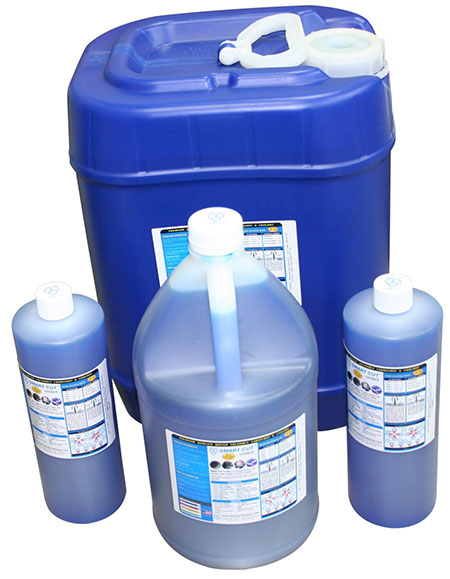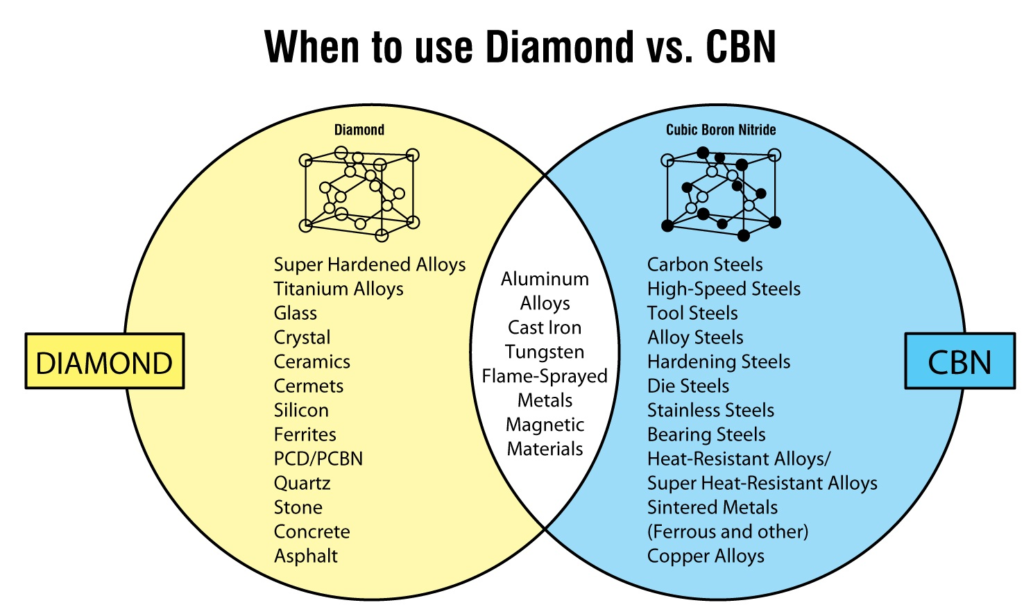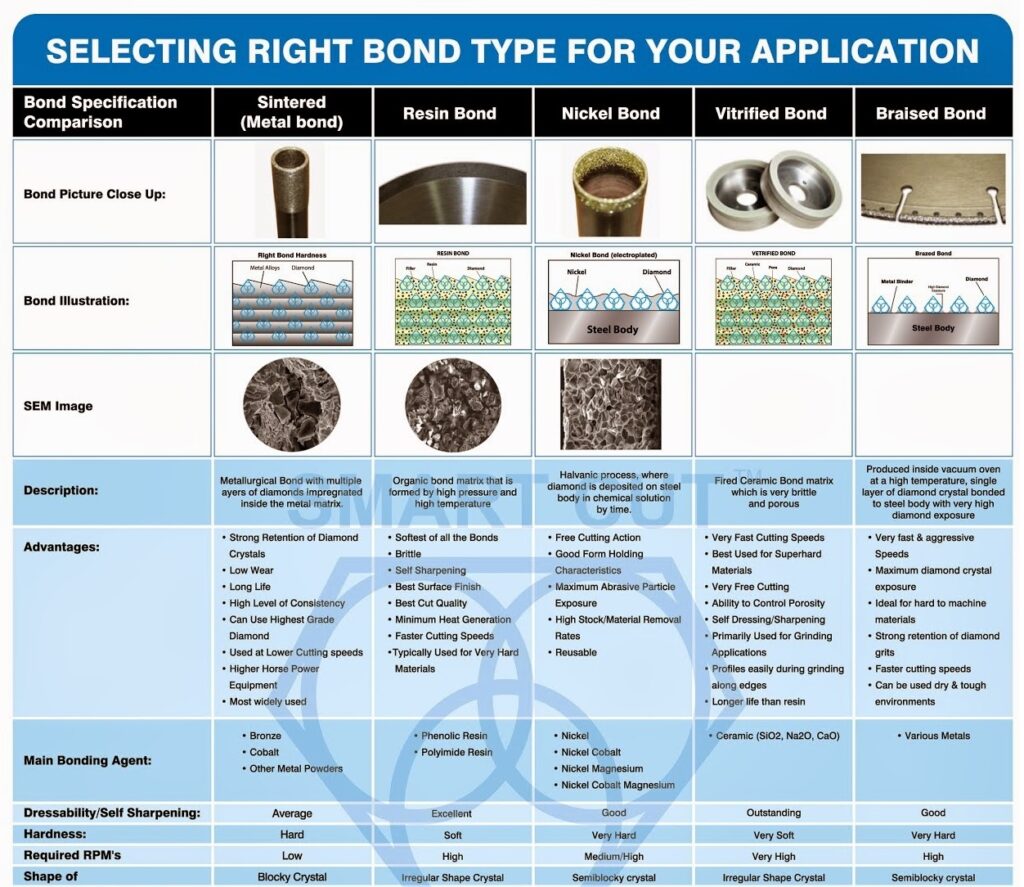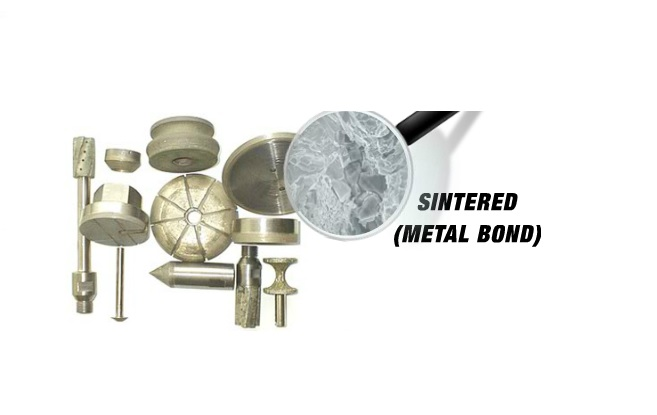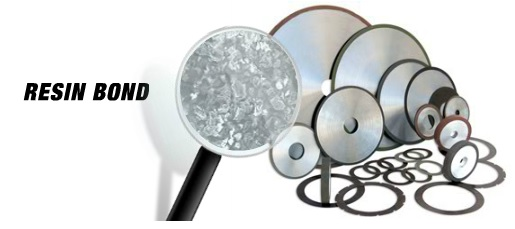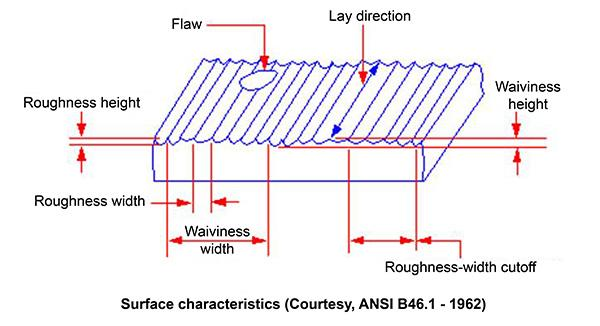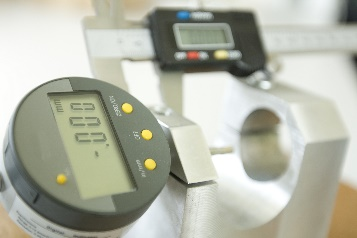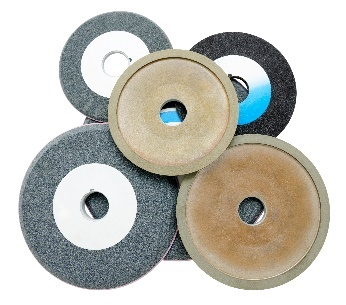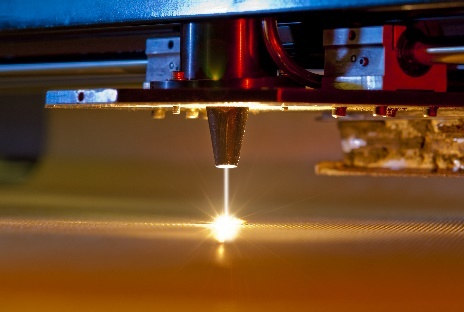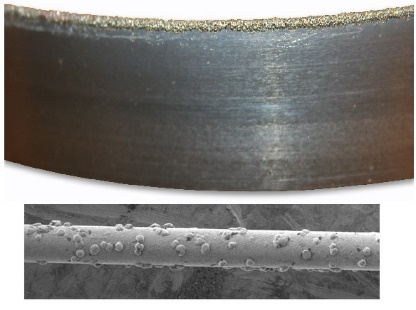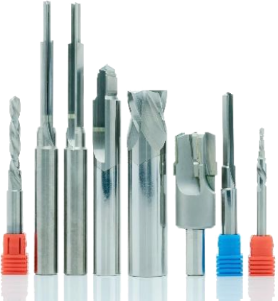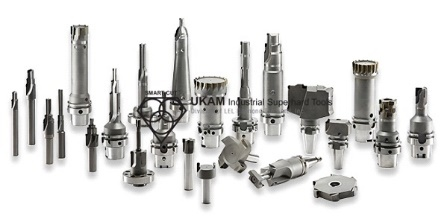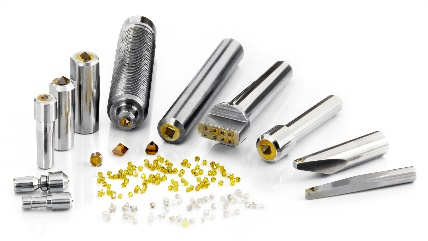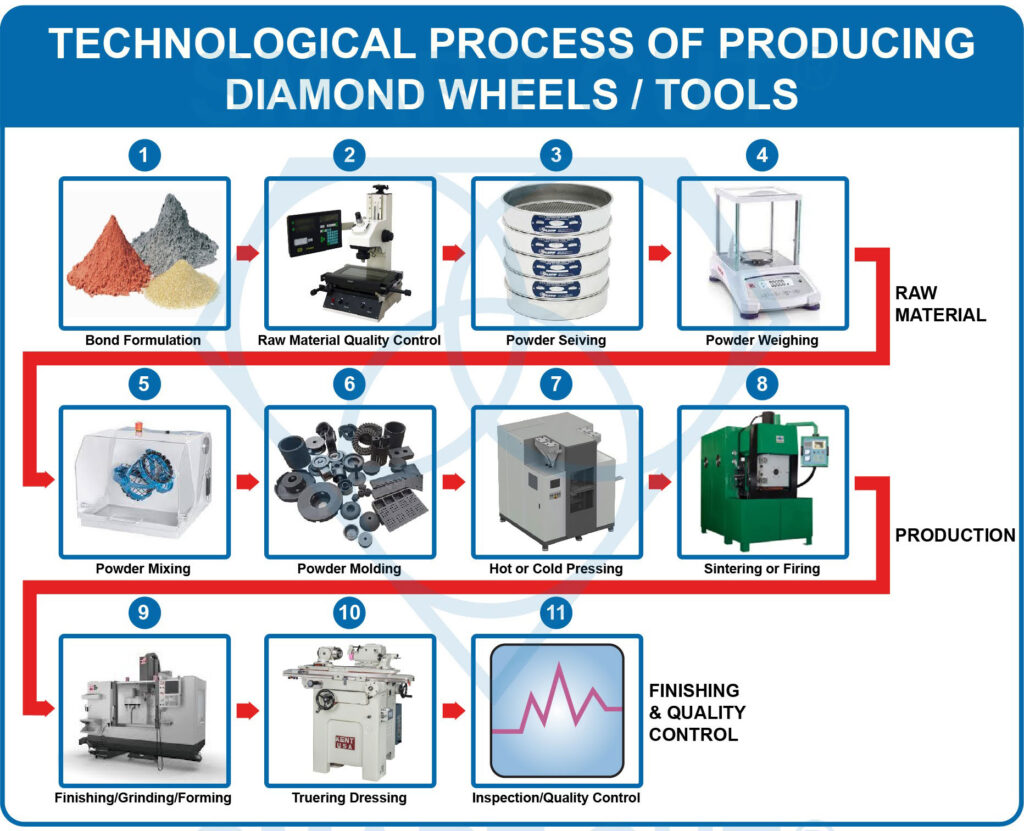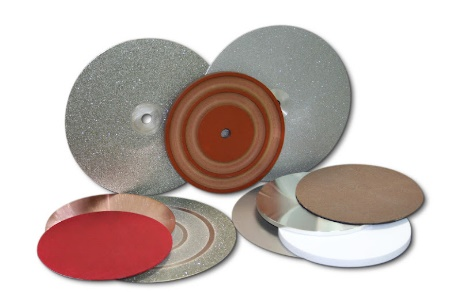Diamond grit size can be defined as the size of the diamond particles used in the bond matrix. The larger the diamond particles (grit size) the faster the tool will cut.

According to U.S. Standards, mesh designates the approximate number of sieve meshes per inch. High Mesh Sizes mean fine grits, and low numbers indicate coarse grits.
As each diamond particle/crystal will dig out and remove more material usually in proportion to its size. Smaller diamond particles/crystals will remove less material, hence cut slower and produce finer surface finish. Diamond grit size particles/crystals are usually smaller then 1mm diameter. Most of them are barely visible to the naked eye. Diamond powder is usually about beach sand in size. Diamond Crystal/Particles are available from large as 16/20 mesh (1,000 microns) to as small as 10 nanometers

Both natural and synthetic diamond used for cutting tool application are classified into two board bands of grit sizes. These are frequently called "saw" and "wheel" grits. The sizing is generally performed by sieving for diamond sizes larger then 40 micron.
Usually sieves is made of cross weaving of metal wires (typically stainless steel) that define numerous square holes. Diamond crystals are placed through on the sieve, with diamond grits are bounced around these holes in a fixed time to separate them in two portions. The mesh with the largest aperture is at the top, and that with the smallest aperture is bottom. Diamond crystals are then divided by those that have passed through the holes and those retained on the screen. Hence each diamond particle/grit size is narrowed down to a band, which is defined by tow sieve aperture sizes (top and bottom).

Example of Sieve Used in Diamond Crystal Grading Process

How to Determine the Diamond Mesh/Grit Size?
To determine the mesh size, count how many opening there are in one inch of screen. The number of opening represents the mesh size. A 100 mesh screen means, there are 100 opening across one linear inch of screen. A 120 mesh screen has 120 opening, etc. As the mesh number increases, the size of the openings decrease. Mesh is not super precision form of measurement of particle size, due to the wire size used in the screen of the sieve
Diamond Grit Sizes smaller then 40 micron are usually measured utilizing laser diffraction and SEM (scanning electron microscopy). As it becomes more difficult to process the size of the diamond particle using sieving process beyond this point.
As finer the weave, the closer the wires get together and eventually there is no space between them. Many diamond grit sizes are also characterized by particle per carat count. This guarantees the number of particles per carat to straight tolerance for each mesh size, helping insure high degree of consistency. The sieve holes are defined by set of specifications. The standard used in US is ANSI and in Europe FEPA.
The American based system is based on number of holes per inch of screen wire, known as mesh size. According to this definition the larger the mesh size, the smaller the hole opening. the European based system on the other hand is based on the average diameter in microns of the hole opening. In US based designation system the smaller the number the coarser diamond grit size, and hence larger the diamond particles.
For Example 60 mesh is much coarser and larger/blocky diamond then 220 mesh. This type of diamond would be used for rougher faster cutting, and 220 mesh more for finer work. In European system, the opposite is true. The larger the micron size designation the coarser and larger the diamond size. For example 160 micron would be used for faster and rougher cut, where 40 micron would be finishing for finishing and more finer cutting operation. See Cross Reference Chart Comparing the Different Diamond Size Designation Standers Available in the World.
Diamond Grit Size Designation Range
Diamond Grit Size is usually designated by range for example 60/80 mesh. This means the diamond particles are between 60 and 80 mesh range, with 70 mesh as bean the mean. Usually that is one of the reasons why minus (-) and plus (+) are used to describe mesh size and particle distribution tests. "+" before the mesh indicates the particles are retained by the sieve, "-" before the mesh indicates the particles pass through the sieve. Typically, 90%+ of the particles will lie within the indicated range. For example, if the particle size of a material is described as -10 / +30 mesh, then 90% or more of the material will pass through a 10-mesh sieve (particles smaller than 2.0 mm) but will be retained by a 30-mesh sieve (particles larger than 0.595 mm). If the material is described as -30 mesh, then 90% or more of the material will pass through a 30-mesh sieve (particles smaller than 0.595 mm).
Diamond Grit Size Effect on Cut Quality and Cutting Speed
How Diamond Grit Sizes influences Surface Finish Quality
Diamond Mesh Size plays a major role in determining:
-
 Surface Finish Quality
Surface Finish Quality
-
 Surface Smoothness,
Surface Smoothness,
-
 Amount & Level of Chipping
Amount & Level of Chipping
-
 Material Micro Structure & Deformation
Material Micro Structure & Deformation
-
 Cutting Speed
Cutting Speed

Finer mesh size diamonds such as 220 and 320 grit are much smaller in size than coarser diamond particles, and will give you a very smooth surface finish, with minimal amount of chipping on edges. These mesh sizes are usually used for fine cutting of a full range of materials such as: LiNbO3, YVO4, GaAs, and optical materials.
How Diamond Grit Sizes influences Cutting Speed
Coarser diamond particles such as 80 and 100 mesh/grit are much larger in diameter and are frequently used for fast cutting and material removal on more harder materials such as silicon carbide, zirconia, Al2O3, stainless steels, and other advanced ceramics and high metallic content materials. These materials do not require a very fine surface finish.
Diamond Mesh size does have considerable effect on cutting speed. Coarse Diamonds are larger than finer diamonds and will remove more material than finer diamond particles.
This means that coarse diamond tools are more aggressive for material removal than the finer grit counterparts and will cut faster. However, the tradeoff is an increase in material micro damage. If you are working with fragile, more delicate materials, then finer mesh size diamond tools are recommended.

Difference Between Abrasive and Diamond Grit Size
Diamond Grit Size and Abrasive Grit and Sand Paper Grit size have no relationship. These are completely different designation systems that are not comparable. When converting from conventional abrasives such aluminum oxide or silicon or sand paper grit size to industrial diamond mesh size, Double the conventional abrasive grit size to find the equivalent industrial or natural diamond mesh (grit size) for your diamond drills/bits. For example: a 60 grit Aluminum Oxide would equal 120 grit in diamond.
How to Determine Most Optimal Diamond Mesh/Grit Size for your Application?
Selecting the right Diamond Grit Size is a compromise between cutting speed (quantity) and surface finish (quality). Optimum results will be found where maximum material cutting rate at minimal acceptable surface finish.
Diamond mesh size (grit size) should provide maximum removal rate at minimal acceptable finish. Often the desired finish cannot be achieved in a single step/operation. In this case two or several steps will be needed. First material will be ground, and then polished by finer diamond grit sizes until desired surface finish has been achieved. Secondary finishing operation such as lapping or polishing may be necessary to produce desired surface finish.
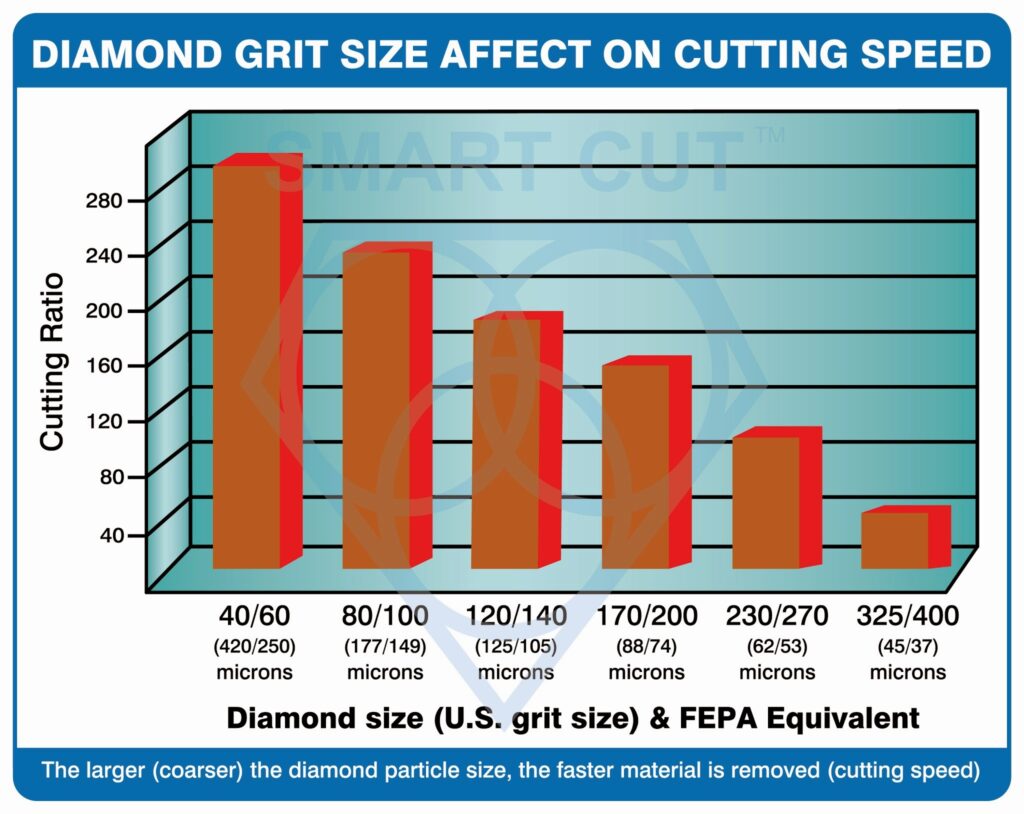
Different industries, applications, diamond bonds and types of tools used different diamond grit sizes. What is considered a coarse diamond grit size will vary depending on the diamond bond type matrix used (such as sintered/metal bond, resin bond, nickel bond, brazed bond, etc), type of tool used (diamond cut off blade, diamond grinding wheel, core drill, cup wheel, router, end mill, form grinding tool, etc) and industry/application used (semiconductor, optics, composites, natural stone, metal, etc). This definition can have broad degree of variation. What is considered too coarse for one industry/application, can be to fine for another, etc.
Coarser diamond grit sizes - typically between 20 mesh to 120 US mesh (300 to 120 microns FEPA) for most bond systems. Coarser diamond grit sizes protrude more for supporting bond matrix so they can cut into the material faster. This results in greater clearance and enables easier swarf ejection when larger material has to be removed per tool revolution. Coarser diamond grit sizes not only cut faster, they also tend to increase tool life compared to their finer/smaller diamond grit counterparts. These are more widely used and preferred for fast material removal and where surface finish is not the primary concern.
Finer diamond grit sizes: typically between 220 to 600 US mesh (240 to 600 microns FEPA)
Diamond Definition
Diamond Mesh/Grit Size
Diamond Micron Size
Recommended Application
Approximate RMS
Saw Grit
40/60
297
Sawing
125-200
Super Course
60/80
213
Roughing (Heavy Stock Removal)
125-150
Large Course
80/100
163
Medium Roughing (General Drilling)
90-125
Course
100/120
137
Semi Roughing (Semifinish Drilling)
64-90
Medium
140/170
97
Rough Finishing (Finish Drilling)
32-48
Fine
200/230
68
Finishing
20-24
Extra Fine
270/325
49
Fine finishing
14-16
Super Fine
325/400
47
Extra finishing
14-15
45 Microns*
400/500
45
Super finishing
13-14
30 Microns*
500/600
30
Polishing
12
15 Microns*
800/1200
15
Polishing
12
9 Microns* 8/10
6/12
1,800
9
Polishing
6 Microns* 4/8
3,000
6
Fine polishing
3 Microns*
8,000
3
Extra polishing
Below is an application example relative to grit size range:
Diamond Grit Size Range
Application Example
20/30 Mesh
Diamond sawing and drilling of very abrasive materials. Such as sandstone, concrete, asphalt. Drilling of Reinforced concrete, frame sawing of abrasive sandstone
30/40 mesh
Diamond sawing and drilling of stone, concrete, reinforced concrete and asphalt. Frame sawing of abrasive sandstone
40/50 mesh
Diamond sawing, drilling and milling of stone (granite, diorite, gabbro, less abrasive sandstone, limestone, dolomite, marble), concrete and refractoriness; wire sawing of stone and construction materials; calibrating of stone slabs
50/60 mesh
Diamond sawing and drilling of very hard fine grained igneous stone (granite, grandodiirte) and refractoriness. circular sawing frame sawing and drilling of fine grained sdimentary and metamorphic stone (limestone, barble. Calibrating of stone slabs
60/80 mesh
Diamond sawing, drilling and milling of glass, calibrating of ceramic tiles
